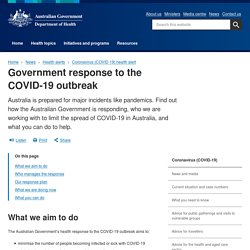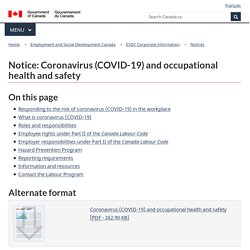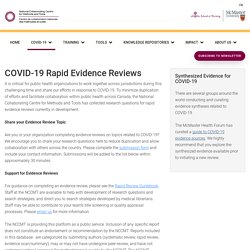

What we know about the COVID-19 Omicron variant. Last week, the world was shaken by news of a worrisome new coronavirus variant called Omicron.

By Monday, President Joe Biden assured Americans, “This variant is a cause for concern, not a cause for panic.” Public health experts say it will take weeks to get the full picture of how this virus mutation is affecting human health, but in the meantime there are steps we can take to mitigate our risk of infection. Since the World Health Organization labeled the Omicron a variant of concern, we have learned a few things. Map: Tracking the Omicron variant. The Omicron coronavirus variant has been detected in at least 19 countries since November 24.
On Monday, the World Health Organization (WHO) warned that the global risk from the spread of Omicron was “very high” and urged 194 member nations to speed the delivery of vaccinations to high-risk groups. No Omicron-linked deaths have yet been reported, though further research is needed to assess its potential to escape protection against immunity induced by vaccines and previous infections, the WHO added. The map below highlights the countries that have reported Omicron cases. (The map will be updated as more information becomes available) The countries/territories include: Covid News: Omicron Variant Puts Nations on Alert. Image Scientists raced to study a new coronavirus variant as several cases were spotted in Europe and governments around the world announced travel restrictions targeting the southern African region where it first emerged, prompting criticism that the continent was yet again bearing the brunt of panicked policies from Western countries.

Omicron, the new variant first detected in Botswana, sent Europe into high alert after cases were detected in the United Kingdom, Germany, Italy and Belgium. The Czech Republic, Austria, Israel and the Netherlands were all investigating suspected cases of the variant. Relatively little is known about Omicron. It has mutations that scientists fear could make it more infectious and less susceptible to vaccines — though neither of these effects has yet to be established. “There certainly is a chance that it has already spread globally, but we just don’t know yet,” Mr. Navigating the Delta variant and the future of COVID-19. Covid-19 variants to be given Greek alphabet names to avoid stigma. Coronavirus variants are to be named after letters of the Greek alphabet instead of their place of first discovery, the World Health Organization has announced, in a move to avoid stigma.

The WHO has named four variants of concern, known to the public as the UK/Kent (B.1.1.7), South Africa (B.1.351), Brazil (P.1) and India (B.1.617.2) variants. They will now be given the letters Alpha, Beta, Gamma, and Delta respectively, to reflect their order of detection, with any new variants following the pattern down the Greek alphabet. The decision to go for this naming system came after months of deliberations with experts considering a range of other possibilities such as Greek Gods, according to bacteriologist Mark Pallen who was involved in the talks. The organisation said the labels do not replace existing scientific names involving numbers, Roman letters and full stops, which convey important scientific information and will continue to be used in research.
Global Taskforce on Pandemic Response. United Nations. World Economic Forum (WEF) European Union Coronavirus response. UK government response. USA Government Response. Government response - Australian Government Department of Health. What we aim to do The Australian Government’s health response to the COVID-19 outbreak aims to: minimise the number of people becoming infected or sick with COVID-19minimise how sick people become and the mortality ratemanage the demand on our health systemshelp you to manage your own risk and the risk to your families and communities Who manages the response State and territory governments are mainly responsible for health matters.

New Zealand Government. Notice: Coronavirus and occupational health and safety. On this page Alternate format Responding to the risk of coronavirus (COVID-19) in the workplace There may be concerns from employers and employees in Canadian federally regulated workplaces about coronavirus and wonder how to prevent exposure in their workplaces.

Workplace parties should consider whether doing certain tasks puts employees at greater risk of exposure to coronavirus. Also consider whether the Hazard Prevention Program needs extra controls or protections. To change the Hazard Prevention Program, the employer must consult the policy or workplace health and safety committee or representative. The employer must inform and train employees on any changes to the Program, including any new personal protective equipment they provide. National Collaborating Centre for Methods and Tools. It is critical for public health organizations to work together across jurisdictions during this challenging time and share our efforts in response to COVID-19.

To minimize duplication of efforts and facilitate collaboration within public health across Canada, the National Collaborating Centre for Methods and Tools has collected research questions for rapid evidence reviews currently in development. Share your Evidence Review Topic Are you or your organization completing evidence reviews on topics related to COVID-19?
We encourage you to share your research questions here to reduce duplication and allow collaboration with others across the country. Please complete the submission form and include your contact information. Support for Evidence Reviews For guidance on completing an evidence review, please see the Rapid Review Guidebook. Coronavirus Update (Live) Coronavirus COVID-19 (2019-nCoV) statistics. Lancet Inf Dis Article: Here.

Mobile Version: Here. Data sources: Full list. Downloadable database: GitHub, Feature Layer. Lead by JHU CSSE. Coronavirus (COVID-19) Vaccinations - Statistics and Research. COVID-19 vaccination doses administered, Jan 1, 2021. Why India's Covid crisis matters to the whole world. COVID-19 vaccination doses administered per 100 people, Jan 1, 2021. The Path to Zero: Key Metrics For COVID Suppression – Pandemics Explained. Harvard Global Health Institute, Harvard's Edmond J.

Safra Center for Ethics, Rockefeller Foundation, CovidActNow, Covid-Local, CIDRAP and many others join forces, launch new COVID Risk Level map and COVID suppression guidance for policy makers and the public Cambridge, July 1, 2020 -- Uncertainty is the currency of pandemics. As evidence on the new coronavirus, how it spreads and who falls ill from it emerges slowly, policy makers and the public have to base their decisions on the best information available.
Experts help interpret the evidence, but they may differ on details that can be confusing for non-experts -- and filtering out what matters from a rising sea of misinformation has become a daunting task. To help cut through the noise and sometimes conflicting advice, a network of research, policy and public health experts convened by Harvard’s Global Health Institute and Edmond J. “Robust TTSI programs are key on the pathway to suppression. Evidence Network to support Decision-making (COVID-END) Mental Health and Psychosocial Considerations During COVID-19 Outbreak. Why Do COVID-19 Death Rates Differ Wildly from Place to Place? While the average number of COVID deaths per million people, as of January 20, stands at 266 globally, many countries are well below or above that number.

In South Korea, the number is 25 deaths per million, and in Australia, it’s 36. Yet in Italy, they’re experiencing 1,384 deaths per million people, in the United Kingdom 1,377, and in the United States 1,277. Similar differences are apparent in deaths per 100,000 people across U.S. states. What factors are driving these huge variations? Sergio Rebelo, a finance professor at Kellogg, together with coauthors Martin Eichenbaum, a professor of economics at Northwestern, and Mathias Trabandt of Freie Universität Berlin, decided to see if they could isolate any variables that would help explain why some regions are losing so many more lives than others.
“We were asking, when you look across countries or across U.S. states, which variables are the best predictors of the death toll from COVID?” The team had a hunch going in. Coronavirus Tracker: Economic Impacts on Business. Bain Macro Trends Group analysis of the global Covid-19 outbreak suggest that businesses should activate second-level contingency procedures that include separating essential operations and services, focusing on high-priority customers and clients, and implementing operational and financial preparations consistent with a two-to-three-quarter recession. The Situational Threat Report (SITREP) Index is a composite assessment based on all available information about epidemiological, economic and social conditions tied to the outbreak (read “About the SITREP Index” below). On April 13, Bain raised the SITREP Index to Level 7. For more detail on the business implications of coronavirus from Bain’s Macro Trends Group, log on to the Macro Surveillance Platform.
Learn more about the platform > Vaccine Tracker. Total number of vaccine candidates Pre-clinical evaluation An effective vaccine against the coronavirus that causes COVID-19 is everyone's hope for a real return to normal life. More than 100 teams of scientists around the world are working to develop and test a vaccine against the virus SARS-CoV-2 as quickly as possible. They're employing a huge variety of strategies and technologies, including some that have never been used in an approved vaccine before. "It's a very fascinating and kind of impressive effort," said Dr. "It's absolutely crucial. " Even in countries that have had a devastating number of deaths from COVID-19, there is nowhere close to a level of "herd immunity" within the population preventing the disease from spreading exponentially if we go back to normal levels of social interaction, she said. Où en est la pandémie de COVID-19? Les courbes représentent la moyenne mobile sur 7 jours, commençant à la plus récente journée.
Pour chaque période de 7 jours, la moyenne des valeurs est calculée. Ces valeurs moyennes servent alors à dessiner les courbes. Pour compiler les chiffres canadiens, CBC/Radio-Canada surveille les communiqués de presse et les communications provenant des différents ordres de gouvernements, incluant les agences de santé. Abbott wins U.S. authorization for $5 rapid COVID-19 antigen test. Google Maps Covid-19 layer shows coronavirus outbreaks near you. Google Maps Covid-19 overlay Google Google on Wednesday announced a new feature in Google Maps that will show you how many Covid-19 cases there are in particular geographic regions. It pulls in information from Johns Hopkins, the New York Times, and Wikipedia and displays a color-coded map with the seven-day average of new cases per 100,000 people in a specific area.
It will work in 220 countries and territories. The Coronavirus Prevention Handbook: 101 Science-Based Tips That Could Save Your Life (2020) by Zhou, Wang, Wang, Qiang, Hu, Ke, Zhang, Zaiqi.